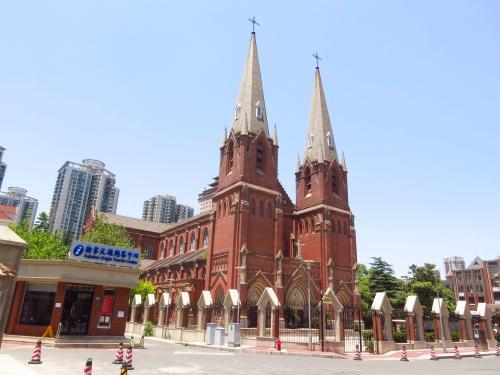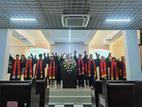Xujiahui is one of the most prosperous areas of contemporary Shanghai and a must-see place for many tourists coming to Shanghai. Its most attractive landmark building is St. Ignatius Cathedral.
St. Ignatius Cathedral, or the Xujiahui Cathedral, located at No. 158, Puxi Road, is the cathedral of the Catholic Diocese of Shanghai. St. Ignatius, the founder of the Jesuits, was honored as the patron (the intercessor of the church). The Xujiahui Catholic Church was officially named "St. Nadall Cathedral".
Xujiahui was originally a small village near Shanghai. The Chinese prime minister in the late Ming Dynasty, Xu Guangqi, the founder of modern Chinese science and technology, in his book, mentioned Xujiahui when referring to the development of the agricultural economy; so it has become a famous place. Xu Guangqi was a university student who studied Chinese and Western cultures. Therefore, Xujiahui has also become a region for communication between Chinese and Western civilizations.
Xu Guangqi became a devout Christian under the influence of the Jesuits. Under his leadership, many people in Xujiahui became believers and formed a local group of Christians. Although the group went through the "hundred years of banned Christianity" of the former dynasty, the belief was still passed down.
In 1842, the Jesuits re-entered China. In 1847, the missionary Claude Gotteland chose Shanghai Xujiahui as the missionary base of the Jesuits in Shanghai. In 1851, the Jesuits built a church on the west bank of Zhao Jiabang; this was the old cathedral of Xujiahui, and St. Ignatius was honored as the patron.
In 1905, the Jesuits decided to rebuild the church in Xujiahui and completed it in 5 years, resulting in the Xujiahui Cathedreal. On October 23, 1910, a sacrament was held, and the founder of the Jesuit, St. Ignatius, was declared patron of the church. Known as the "First Catholic Church in the Far East", it was able to accommodate 2,500 believers. At that time, there were already tens of thousands of believers on the church roster, many of whom were orphans in the church.
The church faces the east and has a cross-shaped plane. It is a French medieval Gothic building with red brick walls, white stone pillars, blue-gray slate roofs, and two bell towers facing north and south, towering into the sky. The Xujiahui Catholic Church was known as the first building in Shanghai at that time because of its large scale, beautiful appearance and exquisite workmanship. On the sides of the church are the office of the Bishop of Shanghai Diocese and a nunnery.
Xujiahui was the center of Catholicism in the Shanghai, and many important events of the Catholic Church were held there. In 1924, China's first national Catholic conference was held there.This meeting made a major breakthrough in the sinicization of the Catholic Church. In the meeting, it was decided to set up six Chinese bishops, set up local seminaries, and unify the "Catechism". The meeting not only allowed the Chinese to be patriotic, but also encouraged patriotism. During the Anti-Japanese War, the Catholic Church actively participated in the anti-Japanese national salvation movement. The Xujiahui Catholic Church was used as a refugee camp to protect the lives of many refugees. In addition, the cultural and educational undertakings of Shanghai Catholicism are also located in Xujiahui.
49 years later, the Xujiahui Cathedral was forced to sever ties with the Vatican and join the Catholic Patriotic Association. During the Cultural Revolution, it was forced to stop all activities and become a warehouse for Shanghai fruit groceries. In 1979, the church was allowed to return and be repaired.
In 1980, the cathedral was officially reopened. On September 25, 1989, the cathedral was announced by the municipal government as a Shanghai Cultural Relics Protection Unit and the first batch of outstanding historical buildings. In 2013, it was listed as a national key cultural relics protection unit.
- Translated by Heirs Han











